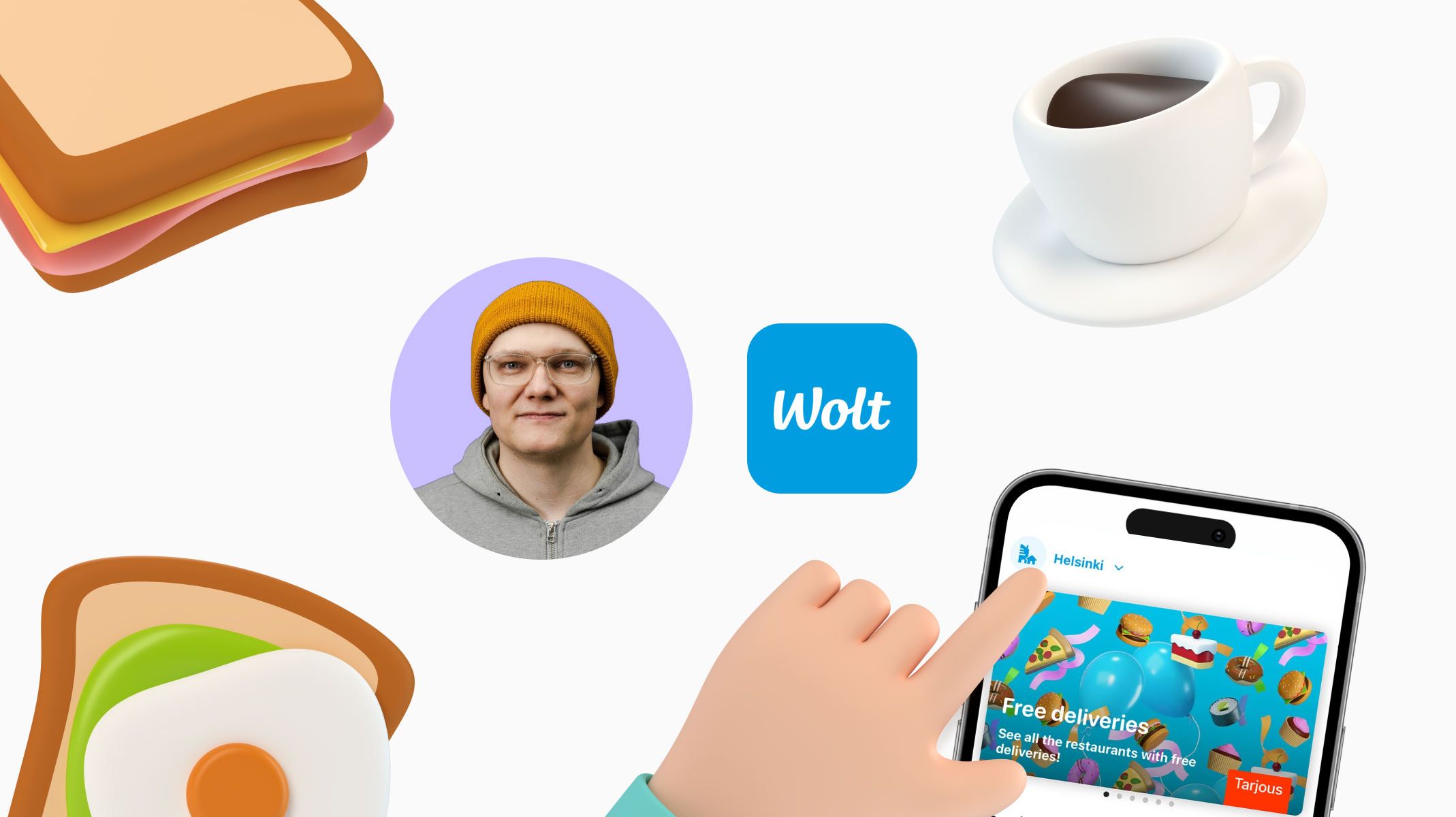Revolutionizing Smart Home Prototyping
Vivint, a leading smart home solutions provider, uses ProtoPie to enhance and strengthen the onboarding process for their Spotlight Pro.


ProtoPie’s July webinar, "Prototyping for the Connected Home: From Idea to Reality," focused on IoT prototyping and featured Nathan Maus and Michelle Zundel from Vivint. Vivint, a leading smart home solutions provider, serves millions of households in the US and Canada, offering advanced home security technology that provides safe, convenient, and more comfortable homes.
During the webinar, the challenges of onboarding customers to their unique Spotlight Pro device were discussed. The use of ProtoPie in their onboarding process played a vital role in the success of the Spotlight Pro due to advanced prototyping capabilities such as the use of variables, conditions, and formulas.
Check out the video below for Vivint’s experience using ProtoPie in developing their user experience—or keep reading for a breakdown of their main points.
TL;DR
- How to not get away with crime
- How ProtoPie helped apprehend the situation
- Madlibs and variables and conditions, oh my!
- Vivint saves the day with the help of ProtoPie
- Revolutionizing smart home prototyping with ProtoPie
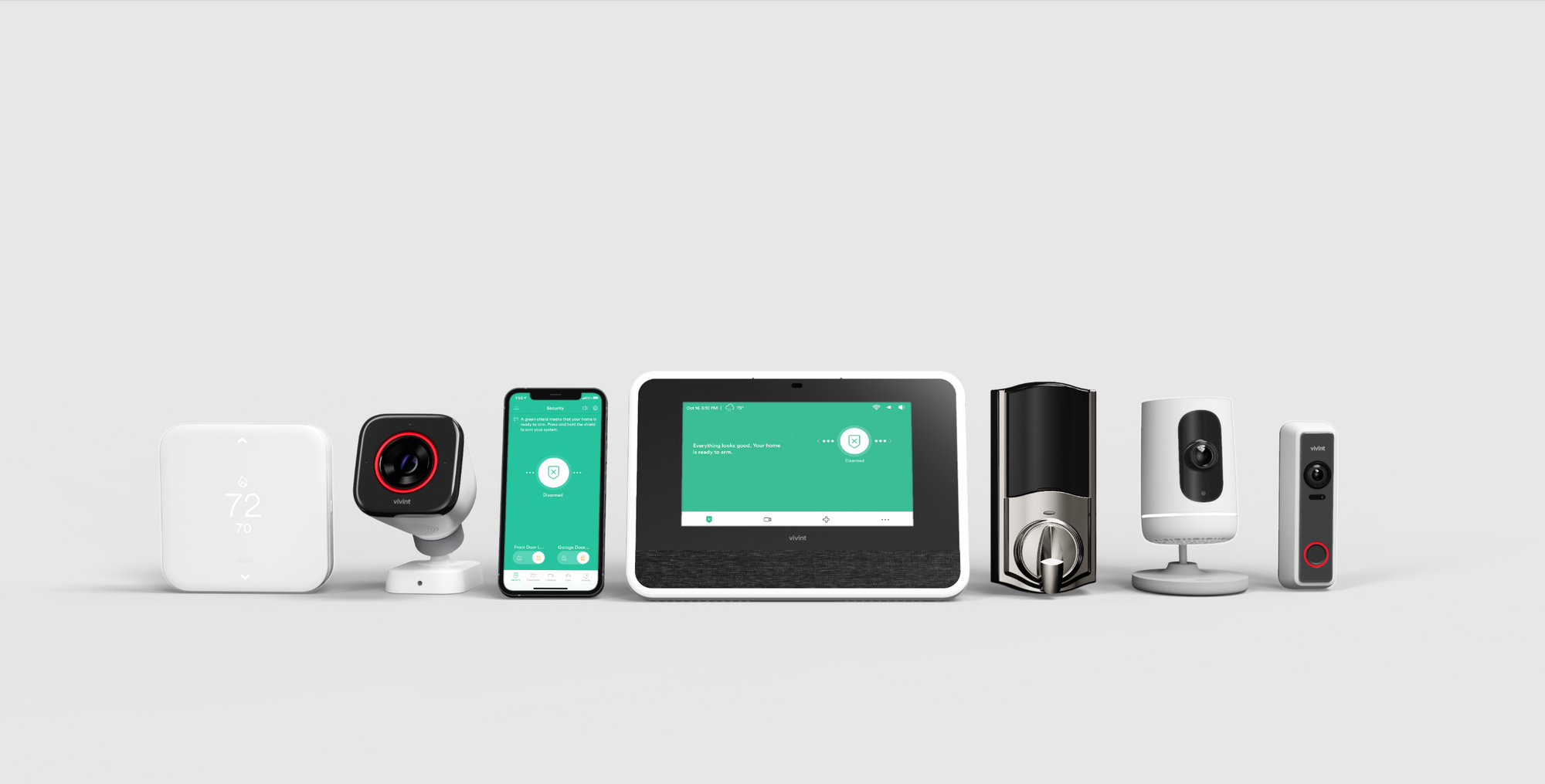
These days, everyone has some smart technology at home. From smart speakers to smart thermostats to smart locks, most things can become smart. The need for a safer and more controlled environment is obvious for many reasons. A safer house means having peace of mind at night.
That is exactly what Vivint strives to enhance and improve for its customers. Vivint is a company dedicated to creating fully integrated smart technology to revolutionize comfort at home. Particularly their newly developed technology brings security cameras to a new level.
How to not get away with crime
At ProtoPie’s webinar in July, Nathan Maus, a Senior UX Designer, and Michelle Zundel, the Director of UX Design, shared their experience developing the technology with the help of ProtoPie. They shared that the majority of crimes that occur are crimes that happen at home – a crime of opportunity. Car break-ins, stolen bicycles, stolen packages – you name it.
However, traditional security cameras have the problem of not really capturing someone or providing enough details to identify them from the footage.

Rather, Vivint found that a more effective solution would be security technology that could deter these unwanted visitors. They created a Deter Mode in their devices to light up and play a sound if a person lingers on a property for too long. Through this feature, the unwanted visitor looks at the device where the sound comes from just long enough for the camera to capture a detailed image.
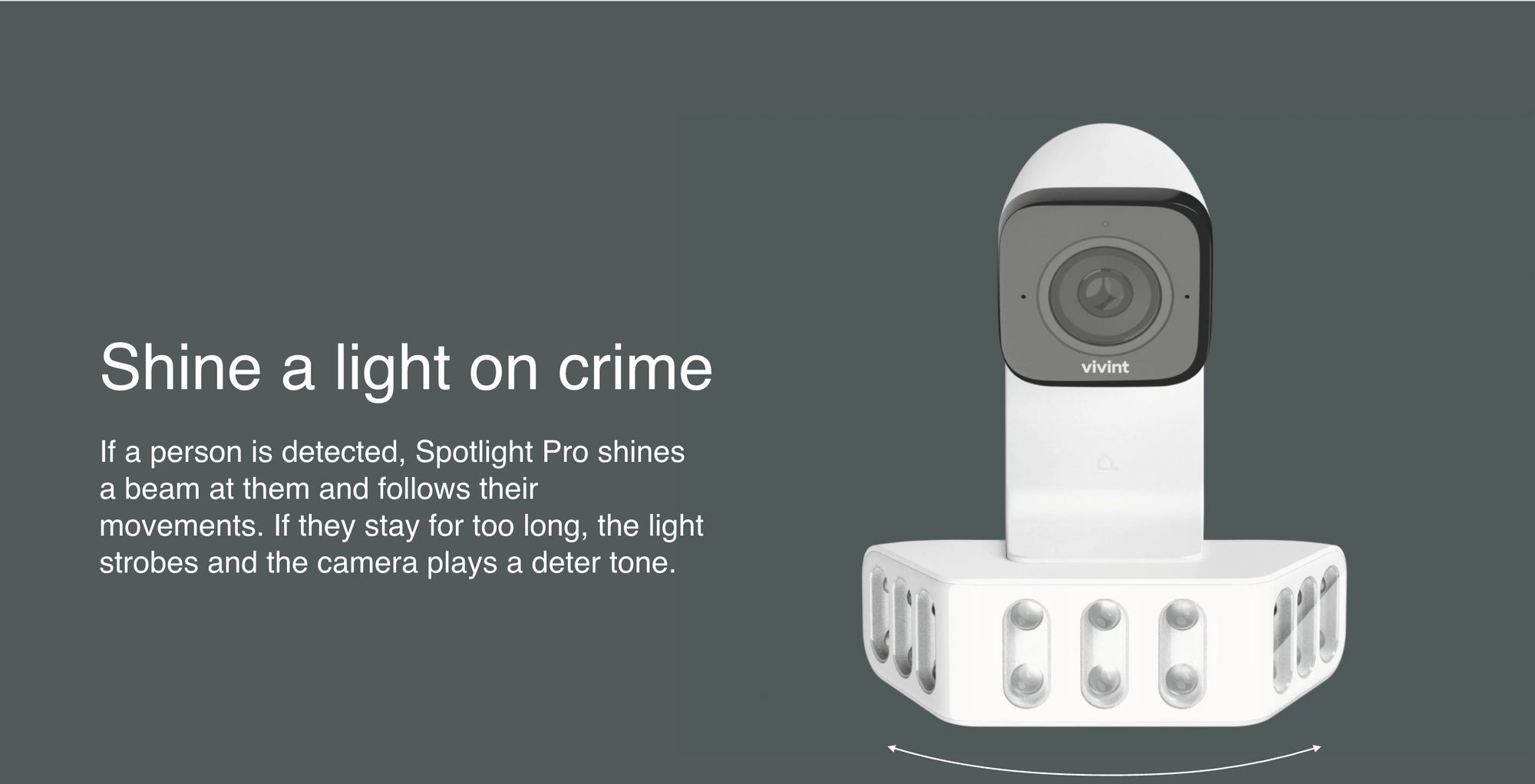
Though the Deter Mode was quite successful, there’s always room for improvement. Enter the Spotlight Pro, a camera that uses the Deter Mode in combination with motion detection spotlights “that has nine different LED zones, attached to the current camera,” Nathan explains. As the name suggests, when someone enters the set parameters of the camera, a spotlight will turn on and follow the person - in this sense, acting as a light deterrent. If they continue to remain on the property, the Deter Mode with sound will play. If things escalate further, light effects such as strobes can be activated. All the while, all of this is being captured on their camera.
How ProtoPie helped apprehend the situation
Now the next challenge here is how to instruct customers about using their technology. Instruction manuals can only go so far, and people want to jump right into using the device. Creating a seamless customer experience requires having to create a high-fidelity prototype and ironing out the kinks before the product can enter the consumers’ hands.
That’s where Nathan Maus shared his experience with prototyping through ProtoPie. Through the simple interface of ProtoPie, Maus is able to start with a robust prototype, mentioning that “I just start in ProtoPie because it makes it very easy to evolve over time.” Taking their current onboarding template into ProtoPie, they were able to easily create the upfront education where customers can swipe through, read, and set up their devices.
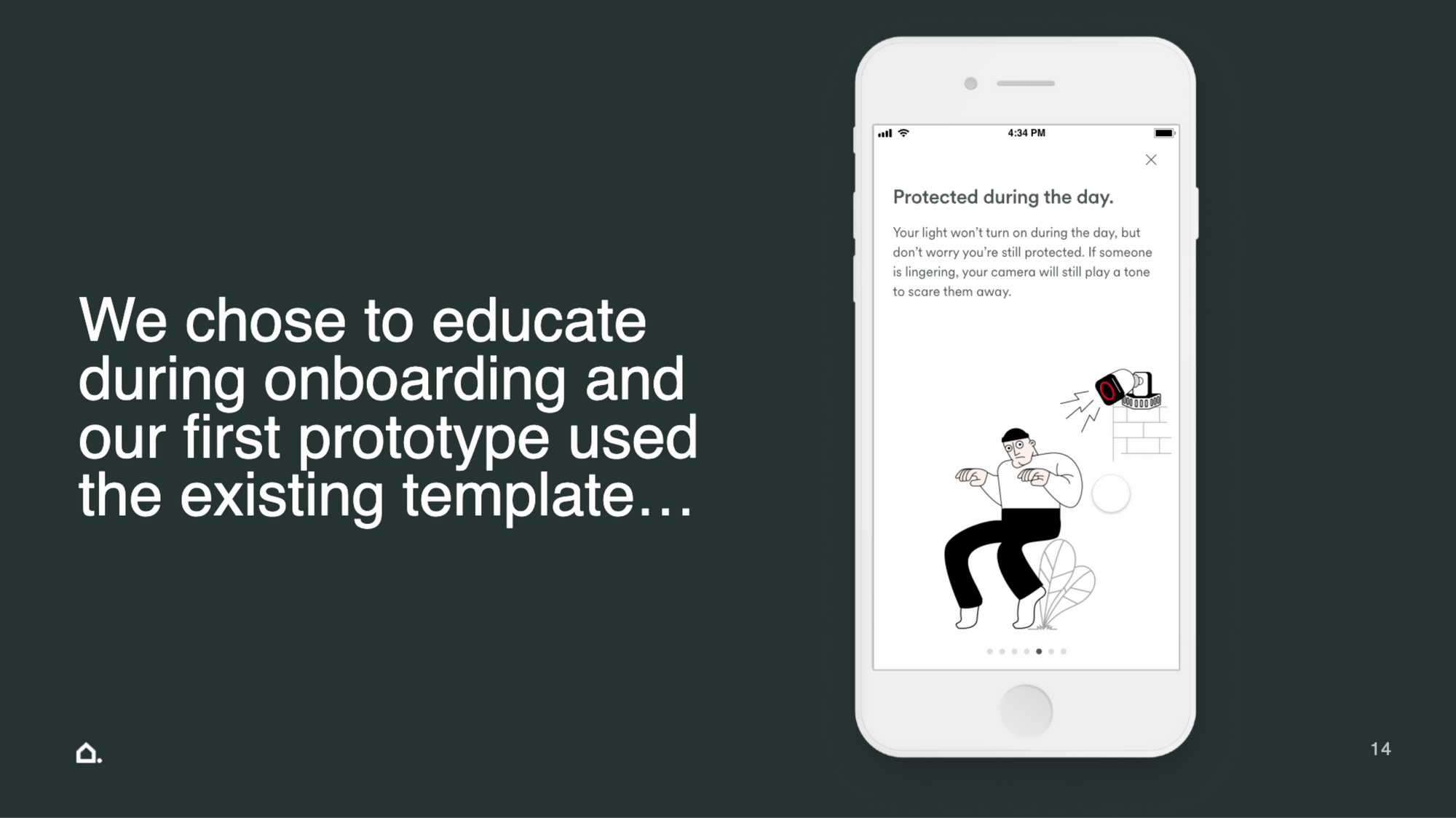
Through prototype user testing, “to [ensure] that customers actually comprehend the product… you'll see we have failed, failed, failed, failed, failed on all of this,” Michelle explained. They realized that consumers tended to swipe through the instructions without much thought and did not understand the device completely. This is because the Spotlight Pro is a very complex product, so it was crucial that consumers understand it thoroughly.
Madlibs and variables and conditions, oh my!
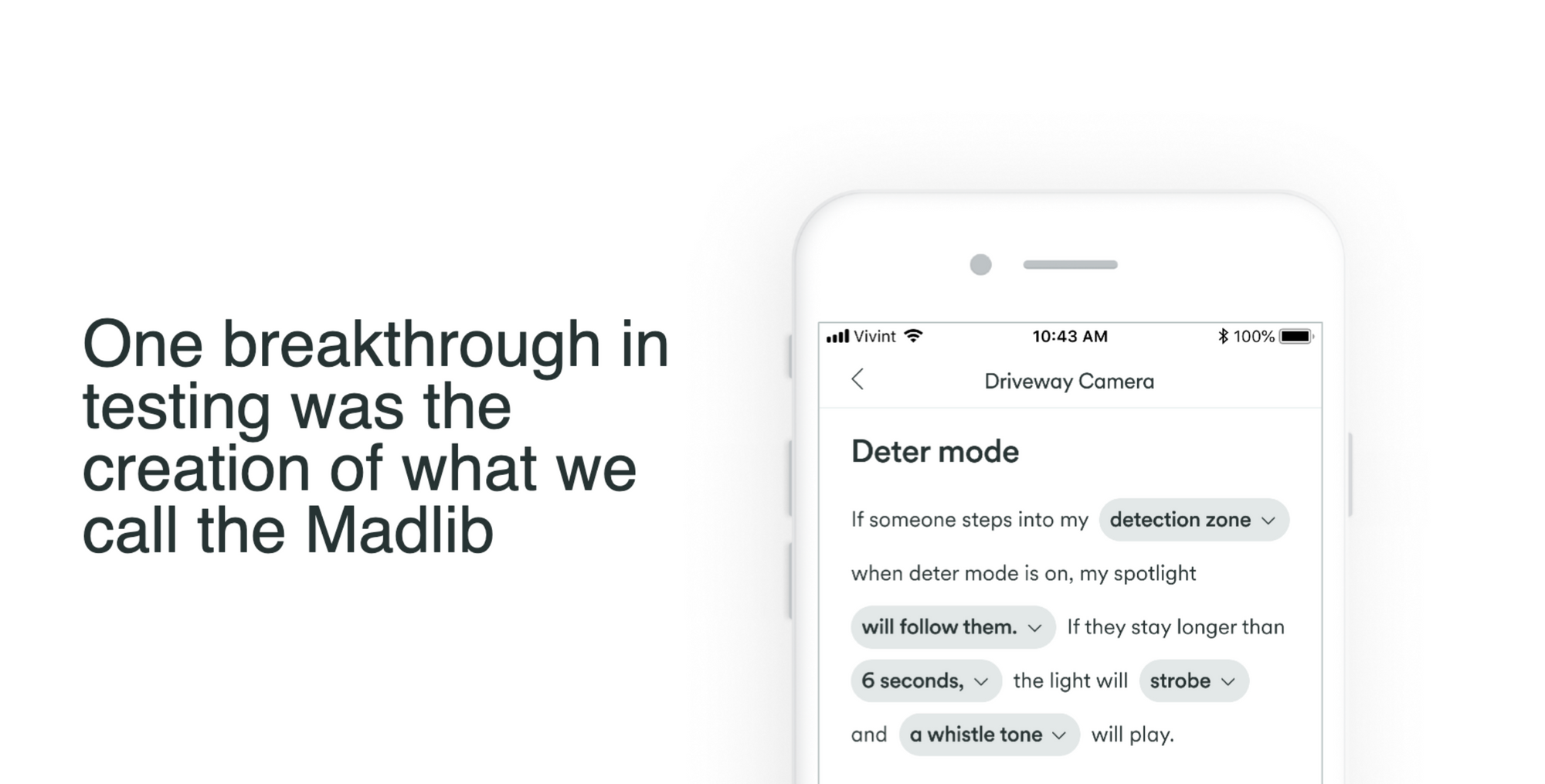
To improve the product experience and educate users on the device, a manual called "Madlib" was created using ProtoPie for a streamlined onboarding process. Just like the nostalgic novelty of actual Madlibs, where you fill in the blanks with certain words and later form a story, Vivint created an experience for consumers through their “Madlib.”
Using a few sentences with in-line blanks where the consumer inputs their desired answers, they would be able to change the settings and set up their Spotlight Pro easily. If they wanted to edit the setting for any reason, they would use the same interface. Nathan explains,
If someone steps into my detection zone when deter mode is on, my spotlight will follow them. If they stay longer than six seconds, the light will strobe, and a whistle tone will play. So it spells it out for them, and then they can tap on those pills to update those settings.
The prototype made through ProtoPie allowed for the “Madlib” feature to pair with a custom animation that shows exactly what happens when consumers change the settings to their preferences. Nathan explains,
Adding a strong visual to the “Madlib” really helped the customer understand the story even better. So, we came up with the idea to have our customers build their own deter story, and to do that, I combined the Madlib with a custom animation that shows exactly how deter mode is gonna work based on the settings they chose.
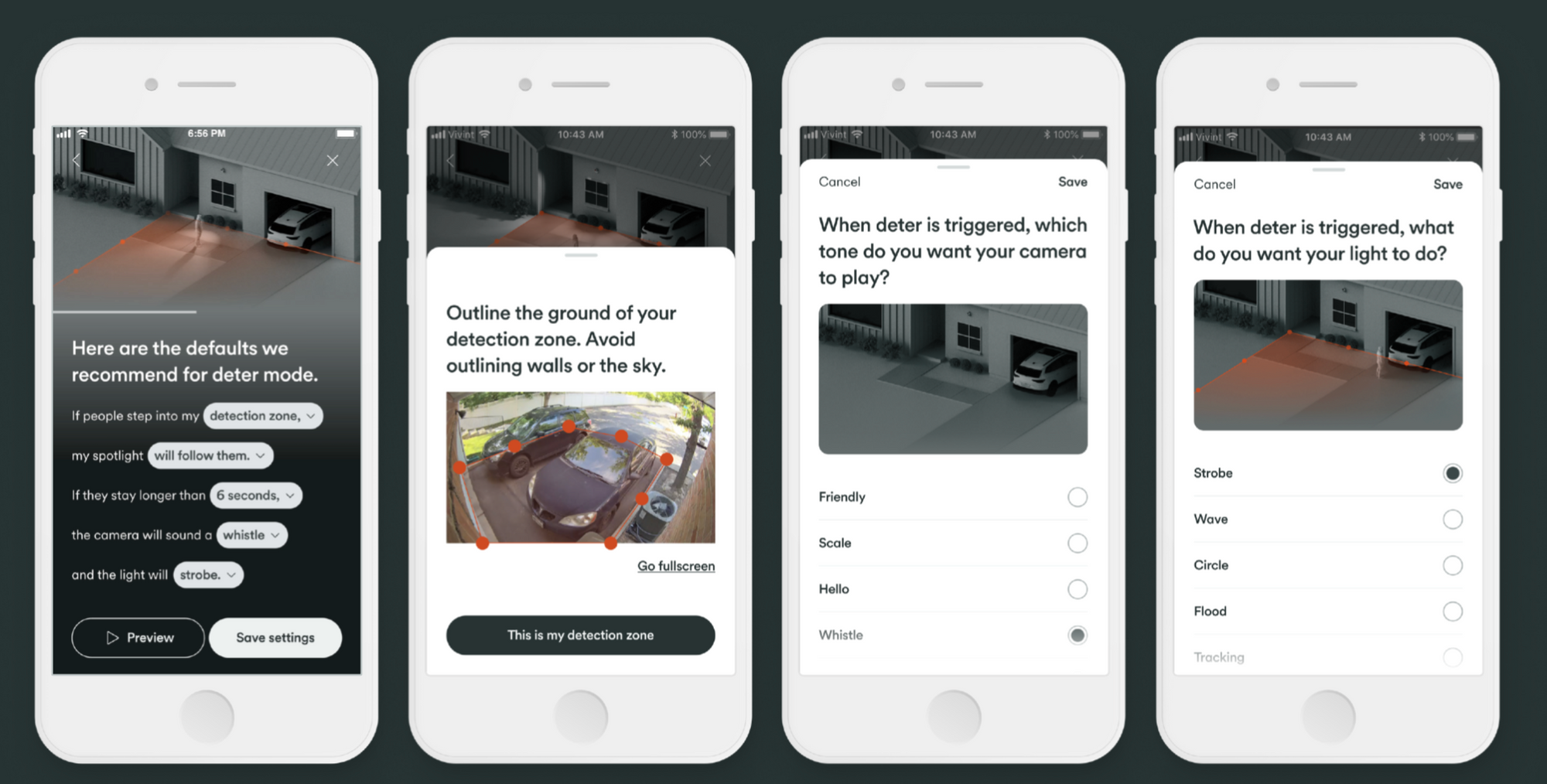
Vivint saves the day with the help of ProtoPie
According to Nathan, the creation of this prototype was made possible thanks to the features offered by ProtoPie. Without ProtoPie, developers would have had to be employed to write codes for this type of prototype.

Using variables, conditions, and formulas to display the options the user would choose in settings, Vivint was able to organize clearly the process and steps through ProtoPie. From there, the preview function allowed Vivint to see exactly how onboarding processing for users on set-up would work.

ProtoPie enabled customization through variables and conditions, resulting in a personalized and bespoke user experience. As an example, the user can customize the tone intensity or spotlight tracking level for individuals who enter the detection area.
Revolutionizing smart home prototyping with ProtoPie
If you want to enhance your product and ensure a seamless user experience, consider using ProtoPie's innovative prototyping platform. As showcased by Vivint, ProtoPie empowers designers like Nathan Maus and Michelle Zundel to develop and refine state-of-the-art security camera features like the Spotlight Pro.
“ProtoPie honestly is the main reason that experience became a reality.” - Nathan Maus, Vivint Senior UX Designer
Join Vivint and help your consumers have a seamless experience with ProtoPie today!
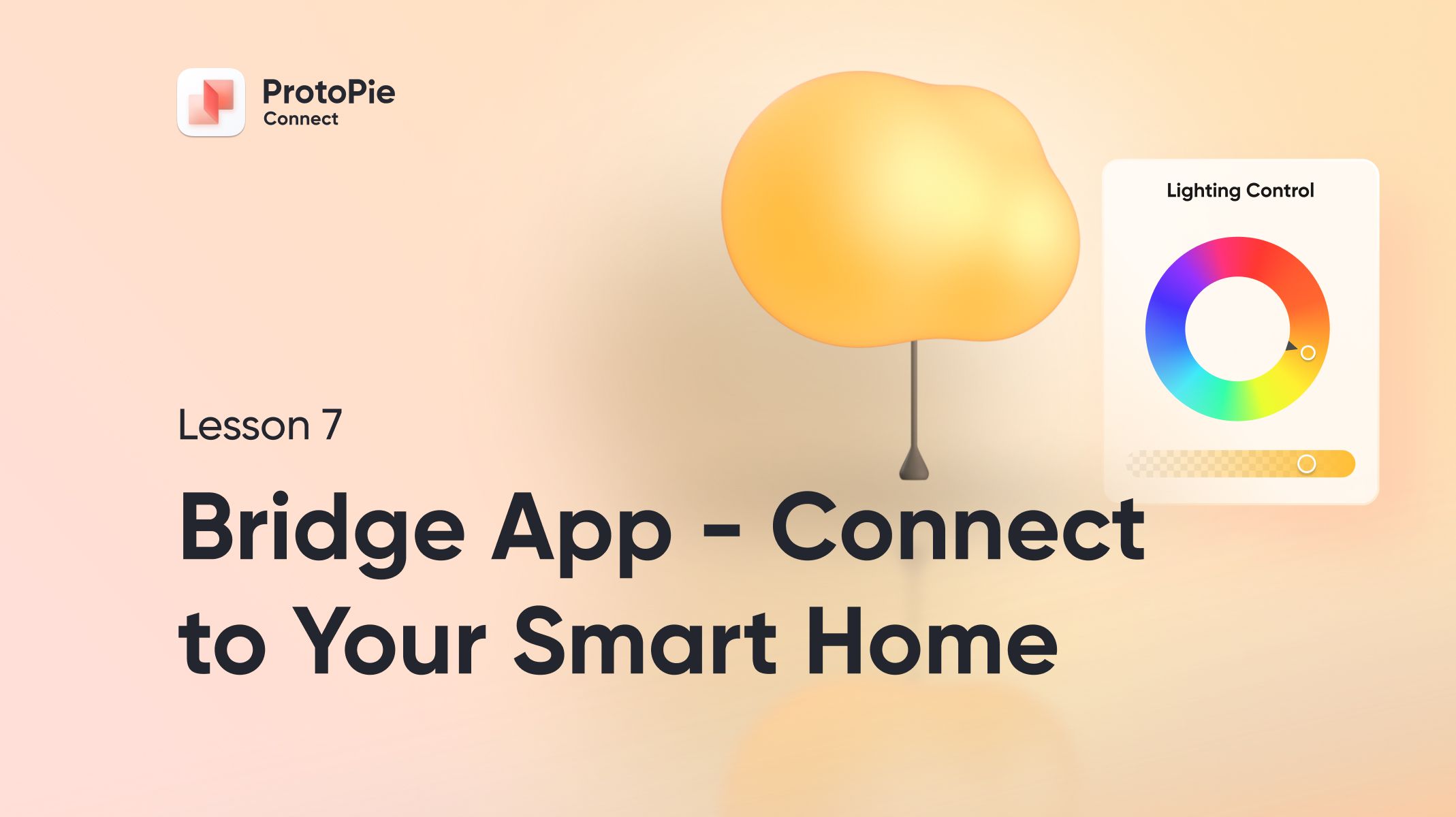
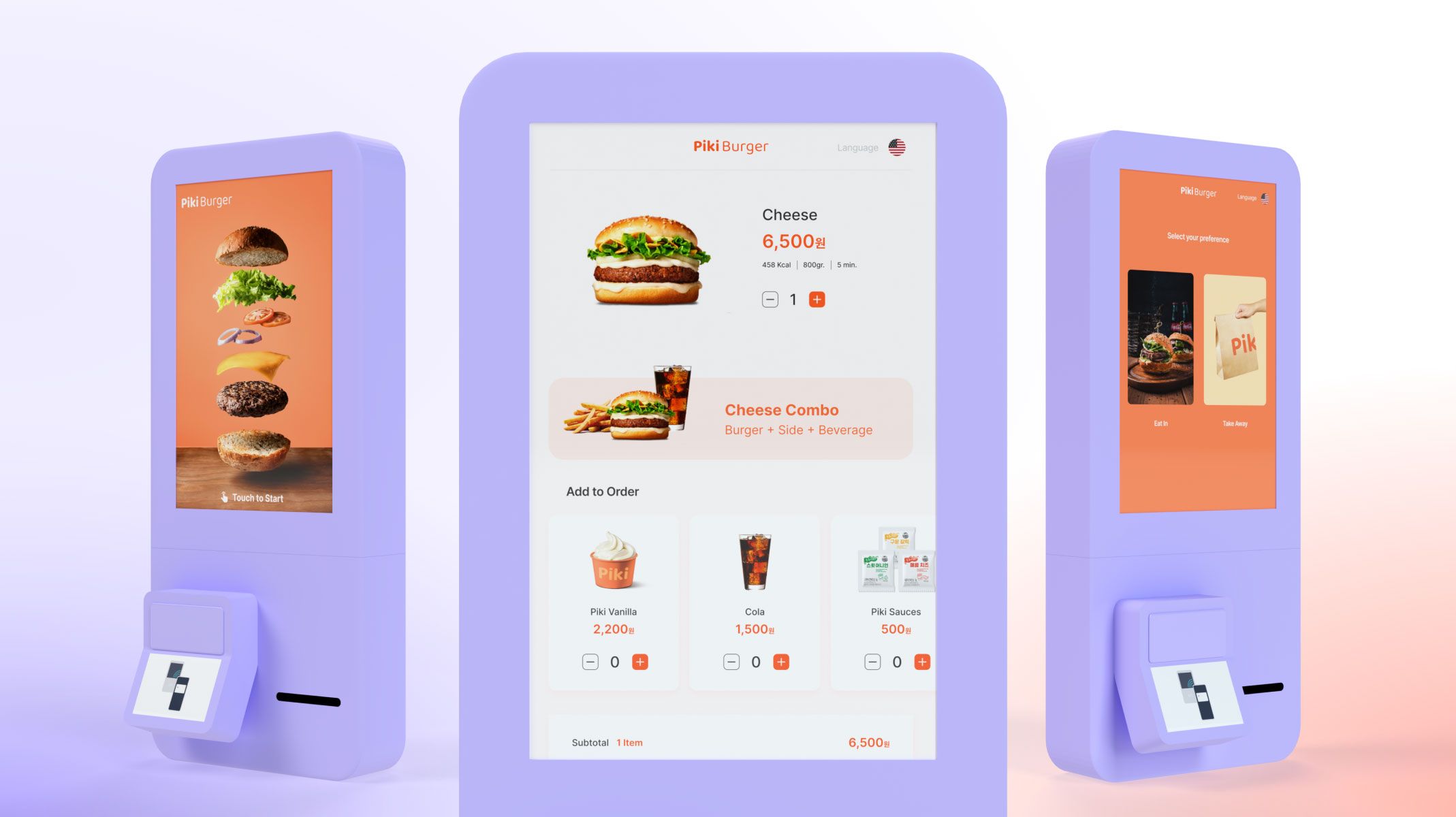.jpg)
